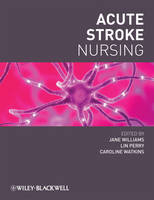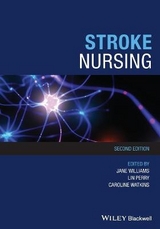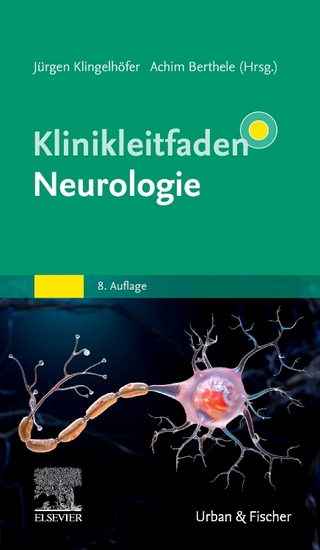
Acute Stroke Nursing
Wiley-Blackwell (an imprint of John Wiley & Sons Ltd) (Verlag)
978-1-4051-6104-6 (ISBN)
- Titel erscheint in neuer Auflage
- Artikel merken
Stroke isa medical emergency that requires immediate medical attention. Withactive and efficient nursing management in the initial hours afterstroke onset and throughout subsequent care, effective recovery andrehabilitation is increased. Acute Stroke Nursing providesan evidence-based, practical text facilitating the provision ofoptimal stroke care during the primary prevention, acute andcontinuing care phases. This timely and comprehensive text is structured to followthe acute stroke pathway experienced by patients. It explores thecauses, symptoms and effects of stroke, and provides guidance onissues such as nutrition, continence, positioning, mobility andcarer support. The text also considers rehabilitation, dischargeplanning, palliative care and the role of the nurse within themulti-professional team. Acute Stroke Nursing is thedefinitive reference on acute stroke for all nurses and healthcareprofessionals wishing to extend their knowledge of strokenursing.
Evidence-based and practical in style, with case studies andpractice examples throughout Edited and authored by recognised stroke nursing experts,clinicians and leaders in the field of nursing practice, researchand education The first text to explore stroke management from UK andinternational perspectives, and with a nursing focus
Jane Williams is Consultant Nurse in Stroke Care, based in Portsmouth Hospitals NHS Trust, UK. She has been involved in many national working parties, including the National Stroke Strategy, UK Forum for Stroke Training, and UK Stroke Forum. Jane is member of The Stroke Association research awards committee. A founder member of the National Stroke Nursing Forum, Jane undertook a term of office as chair. Lin Perry is Professor of Nursing Research and Practice Development, University of Technology, Sydney and the Northern Hospitals Network, South Eastern Sydney and Illawarra Area Health Service. A member of the Intercollegiate Stroke Working Party in the UK, the National Stroke Foundation Guidelines Working Party and Stroke Services New South Wales in Australia, she has extensive experience with national guideline development, benchmarking, service review and evaluation. Caroline Watkins is Professor of Stroke and Older People's Care at the University of Central Lancashire, UK. As a member of the Vascular Team at the Department of Health, she is working to implement the National Stroke Strategy, and leads the development of the new UK Forum for Stroke Training. Caroline is the president of the Society for Research in Rehabilitation and on the Steering Group of the National Stroke Nursing Forum.
Foreword Editors and Contributors 1 Setting the scene(Caroline Watkins and MichaelLeathley) Introduction Stroke epidemiology Stroke policy Stroke management strategies Research and education Conclusion References 2 Developing stroke services: a key role for nursing andnurses (Christopher R. Burton) Introduction Service development The nursing contribution to stroke services The political agenda shaping stroke service development Conclusion References 3 What is a stroke? (Anne W. Alexandrov) Introduction Stroke development processes Risk factors for stroke Anatomy, physiology and related stroke clinical findings Standardised instruments for acute neurological assessment Conclusion References 4 Acute stroke nursing management (Anne W.Alexandrov) Introduction Priorities in acute stroke management Hyperacute stroke management Acute stroke management Conclusion References 5 Nutritional aspects of stroke care (Lin Perry andElizabeth Boaden) Introduction Do stroke patients experience nutritional problemspre-stroke? How does stroke affect dietary intake? How can stroke patients be helped to maintain adequate dietary intake? Conclusion References 6 Promoting continence (Kathryn Getliffe and WendyBrooks) Introduction Bladder problems and urinary incontinence Bowel problems and bowel care Conclusion References 7 Management of physical impairments post-stroke(Cherry Kilbride and Rosie Kneafsey) Introduction Movement Moving and handling people with stroke Therapeutic positioning and seating in the acute phase Promoting early mobilisation Falls prevention Restoration and re-education of movement Management of the upper limb Further rehabilitation strategies and novel developments Patients perspective on mobility rehabilitation Conclusion References 8 Communication (Jane Marshall, Katerina Hilari andMadeline Cruice) Introduction Communication impairments caused by stroke Language minorities The role of the speech and language therapist in acute strokecare Psychosocial issues and quality of life Conclusion References 9 Mood and behavioural changes (Peter Knapp) Introduction Psychological reactions to the onset of stroke Conclusion References 10 Minimally responsive stroke patients (Elaine Pierceand Aeron Ginnelly) Introduction Definitions and identification Minimally responsive state Locked-in syndrome Conclusion References 11 Rehabilitation and recovery processes (JaneWilliams and Julie Pryor) Introduction Initiation of rehabilitation Outcomes of rehabilitation Recovery processes Transfer to rehabilitation Rehabilitation provision Conclusion References 12 Stroke and palliative care: a difficult combination?(Christopher R. Burton and Sheila Payne) Introduction Palliative care Relevance of palliative care to stroke Organisational challenges Conclusion References 13 Reducing the risk of stroke (Peter Humphrey, JoGibson and Stephanie Jones) Introduction Primary prevention Secondary prevention: identifying those at risk of stroke Public awareness and access to services Secondary prevention of stroke in less common aetiologies and patient groups Conclusion References 14 Longer-term support for survivors and supporters(Louise Brereton and Jill Manthorpe) Introduction Leaving hospital What is required longer term? What do carers want? Conclusion References 15 Stroke resources for professionals, patients andcarers (Graham Williamson) National associations Resources for patients and carers Other resources and organisations Specialist international journals Non-specialist journals stroke collections Clinical practice guidelines Finding current stroke research Evidence-based practice resources Chapter links Index
| Erscheint lt. Verlag | 5.3.2010 |
|---|---|
| Verlagsort | Chicester |
| Sprache | englisch |
| Maße | 189 x 244 mm |
| Gewicht | 692 g |
| Themenwelt | Medizin / Pharmazie ► Medizinische Fachgebiete ► Neurologie |
| Medizin / Pharmazie ► Pflege | |
| ISBN-10 | 1-4051-6104-3 / 1405161043 |
| ISBN-13 | 978-1-4051-6104-6 / 9781405161046 |
| Zustand | Neuware |
| Informationen gemäß Produktsicherheitsverordnung (GPSR) | |
| Haben Sie eine Frage zum Produkt? |
aus dem Bereich



